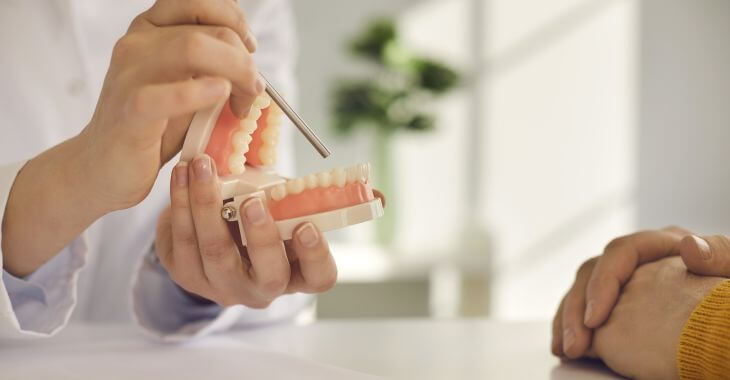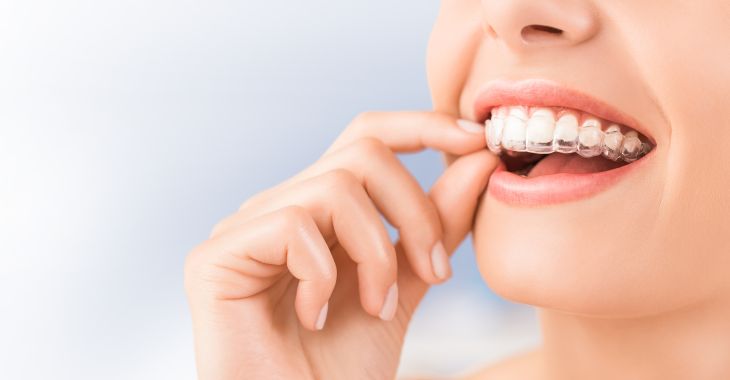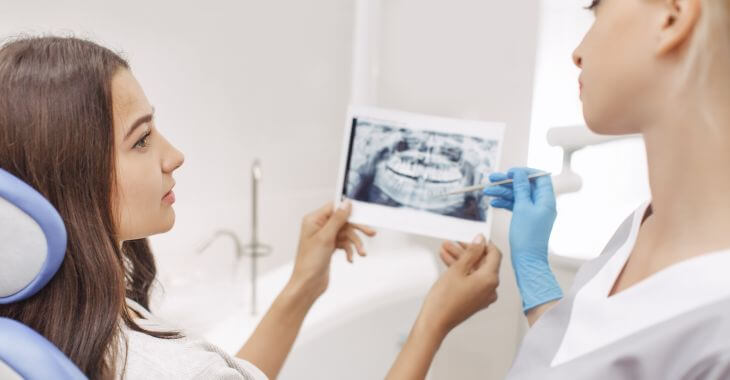Open Bite Teeth: Causes, Risks and Treatment

If you have a gap between your upper and lower teeth when your jaw is completely closed, you may have an open bite. This is a type of malocclusion or bite deformity that can affect your oral health, wellness and appearance. If you have open bite teeth, learn more about the causes, risks and treatment options.
What Is an Open Bite?
An optimal bite for your smile involves the upper and lower teeth all touching when you close your mouth. Ideally, the top teeth slightly overlap the bottom teeth on the outside. With an open bite, there is a space between the upper and lower teeth. This can occur with the front or back teeth.
The most common sign of an open bite is appearance. The gap is more commonly in the front teeth, making it obvious that the teeth are not coming together. Other symptoms of this type of bite problem include:
- Difficulty chewing food
- A lisp or speech problems
- A receded or small chin
- Difficulty swallowing
- Discomfort when biting
Bite issues are usually noticeable as a child or adolescent, but malocclusions do get worse with age. Adults may experience a larger gap between their upper and lower teeth as they get older.
Causes of Open Bite Teeth
Like most malocclusions, there are different possible causes of an open bite. One of the most common influencers is genetics. The skull and dental structure that you are born with can impact the alignment of your jaw and teeth, which can result in a gap between the lower and upper teeth. Other causes include:
- Poor oral habits – thumb sucking, tongue thrusting and lip sucking can contribute to an open bite
- Damage to the jaw – trauma or injury to the jaw
- Tongue and swallowing problems – a poor tongue posture or abnormal pattern when swallowing can affect teeth or bite alignment
- Small jaw – problems with teeth erupting due to limited jaw space
- Oral conditions – rheumatoid arthritis, TMJ/TMD and other oral conditions can affect bite
While there are oral habits that can contribute to poor bite or teeth alignment, most people with an open bite have other causes as well.
Risks Associated with an Open Bite
Misaligned teeth and bite can cause a multitude of issues, including an open bite. Specifically with teeth that do not completely come together, there are dental, health and lifestyle issues that can impact patients throughout their lives. Some of these risks include:
- Prone to decay
- Higher risk of gum or periodontal disease
- Temporomandibular joint disorders (TMD) (jaw pain, headaches, earaches)
- Speech impediment
- Snoring and sleep problems
- Digestive disorders from poorly chewed food
- Unattractive smile, affecting confidence and overall appearance
While appearance is one of the main reasons for seeking treatment for bite problems, it is far from the only reason or risk. Orthodontic treatment can resolve open bite teeth to create a beautiful, healthy smile that can reduce the above risks.
Open Bite Orthodontic Treatments
Kids, teens and adults can receive treatment for their bite problems or malocclusions from an orthodontist. Treatment begins with a thorough diagnosis of the bite and alignment problems. This includes an exam with x-rays and possibly more advanced imaging like CT scans.
Once an open bite is diagnosed, a treatment plan can be recommended. Most individuals with an open bite can adjust their teeth with braces or clear aligners, but some patients may need oral surgery. Most patients will have a choice between different orthodontic treatments to obtain a healthy smile.
- Braces
- The traditional option for straightening teeth and correcting bite issues is braces. Modern braces come in many types, from the traditional metal braces to ceramic (white) or lingual braces. Braces tend to be less expensive and can be customized to address very specific orthodontic concerns.
- Aligners
- Invisalign® and other clear aligners are very popular for orthodontic treatment. Aligners are very effective for aligning most open bite teeth. Aligners are more comfortable and discreet compared to most braces – they can also be removed for eating food and oral hygiene.
- Oral Surgery
- To fix some structural issues in the jaw or teeth, oral surgery may be required. Oral surgery may be the first step for open bite treatment, followed by braces or aligners to straighten and align the teeth and bite.
- Retainers
- Those with an open bite will need to wear a retainer for the rest of their life once their orthodontic treatment is complete. After an initial period, aligners are usually only worn at night, keeping the teeth and bite aligned.

If you or your child have symptoms of open bite teeth, you can improve your smile health and appearance with orthodontic treatment. Protect your smile and health by scheduling an appointment for you or your child with your dentist or local orthodontist.
The information provided on this website, including text, graphics, images, and other materials, is intended solely for informational purposes and should not be used as a substitute for professional medical advice, diagnosis, or treatment.




)